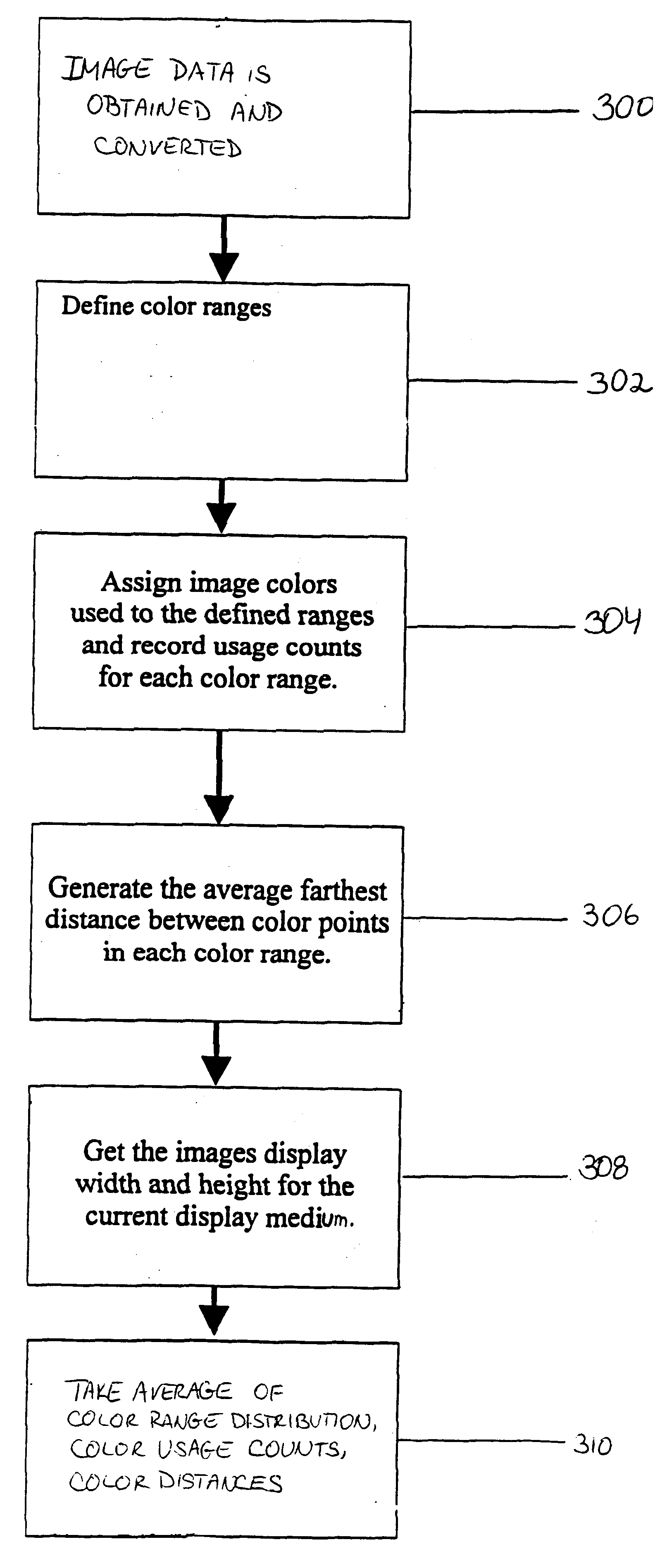Method and apparatus for image identification and comparison
a technology of image identification and comparison, applied in image enhancement, image data processing, instruments, etc., can solve the problems of copyright owners, difficult or impossible to determine whether an electronic image is an original image or a duplicate of the original, and image identification will not be possible using the digital watermark. to achieve the effect of being easily identified
- Summary
- Abstract
- Description
- Claims
- Application Information
AI Technical Summary
Benefits of technology
Problems solved by technology
Method used
Image
Examples
example 1
Image 1=Reference Image
Image 2=Comparison Image
Number of Ranges for:
Color Distribution=32
Color Space Usage=32
Color Range Distance=32
Step 1: All colors used in the reference image are assigned to one of 32 different ranges in the RGB color space to generate the image Color Distribution, starting with white 255,255,255 and ending with black 0,0,0. For example, Range 1 is 255,255,255 through 247,0,0 and Range 2 =246,255,255. The remaining ranges are similarly determined.
Step 2: The percentage of color elements used by the reference image in each RGB color space range is generated.
Step 3: The percentage that each color range is used in the reference image in the RGB color space is generated.
Step 4: The average distance between the two farthest points of each color in a Color Range is generated for each Color Range.
Step 5: The image height and width for the specific selected display model is determined.
II. Image Comparison:
Step 6: Image Distribution Characteristic...
PUM
 Login to View More
Login to View More Abstract
Description
Claims
Application Information
 Login to View More
Login to View More - R&D
- Intellectual Property
- Life Sciences
- Materials
- Tech Scout
- Unparalleled Data Quality
- Higher Quality Content
- 60% Fewer Hallucinations
Browse by: Latest US Patents, China's latest patents, Technical Efficacy Thesaurus, Application Domain, Technology Topic, Popular Technical Reports.
© 2025 PatSnap. All rights reserved.Legal|Privacy policy|Modern Slavery Act Transparency Statement|Sitemap|About US| Contact US: help@patsnap.com



